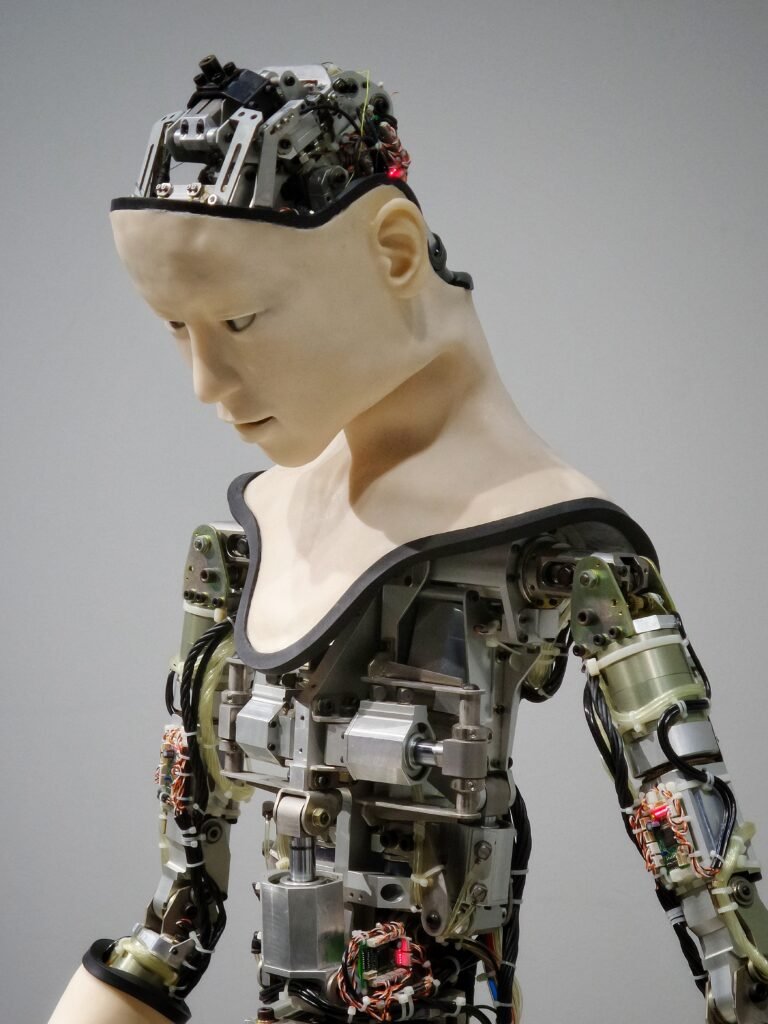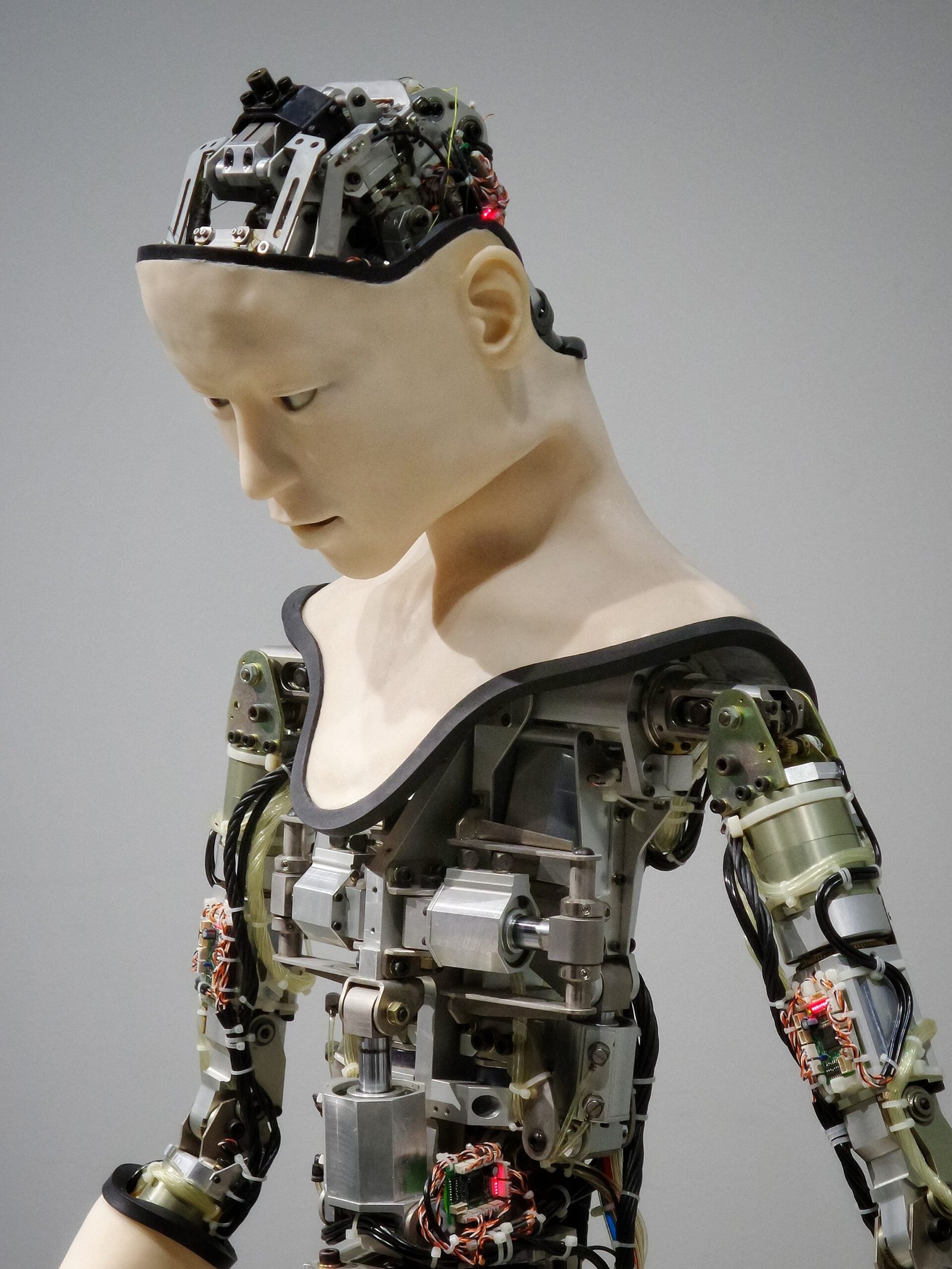Imagine a future where artificial intelligence (AI) systems work seamlessly alongside neurosurgeons in operating rooms, their intelligent algorithms providing crucial assistance to save lives. According to the UK’s National Hospital for Neurology and Neurosurgery, this reality may become a widespread practice by 2026. The integration of AI into the operating room has the potential to revolutionize healthcare, enabling trained neurosurgeons to operate even more safely and efficiently. With improved surgical outcomes as the ultimate goal, this remarkable advancement promises a brighter future for medical professionals and patients alike.

Benefits of AI in Operating Rooms
Improved surgical outcomes
The integration of artificial intelligence (AI) systems in operating rooms has the potential to greatly improve surgical outcomes. With AI technology, surgeons can benefit from real-time insights and assistance during complex procedures. AI systems can analyze large amounts of data and identify patterns that may not be evident to the human eye, allowing for more precise diagnoses and treatment plans. Additionally, AI can help minimize the risk of surgical errors by providing decision support and ensuring that surgeons have the most up-to-date information at their disposal.
Enhanced safety measures
Patient safety is of utmost importance in any surgical procedure, and AI can play a crucial role in ensuring the highest level of safety measures. AI systems can assist in monitoring vital signs, detecting anomalies, and alerting surgeons to any potential risks or complications during surgery. By continuously analyzing data and providing real-time feedback, AI systems can help prevent errors, identify potential adverse events, and intervene when necessary, ultimately enhancing the safety of patients.
Increased efficiency and productivity
Another significant benefit of implementing AI systems in operating rooms is the potential for increased efficiency and productivity. AI can automate routine tasks, allowing surgeons to focus more on complex procedures and critical decision-making. By streamlining processes and optimizing workflows, AI systems can help reduce surgical time and increase the number of surgeries performed. This, in turn, can improve patient access to timely surgical interventions and alleviate the strain on healthcare systems.
Current AI Applications in Neurosurgery
Preoperative planning
AI is already being used in neurosurgery for preoperative planning. By analyzing medical imaging data such as CT scans and MRI scans, AI algorithms can assist surgeons in identifying the location and extent of tumors or abnormalities. This information helps surgeons develop precise surgical strategies, optimize incision placement, and anticipate potential challenges that may arise during the procedure.
Intraoperative imaging
During surgery, AI can enhance intraoperative imaging by providing real-time augmented reality overlays. By integrating existing imaging systems with AI technology, surgeons can have a better understanding of the patient’s anatomy, including the location of vital structures, blood vessels, and tumors. This augmented visualization can aid in navigating complex anatomical regions, increasing surgical precision, and reducing the risk of accidental damage.
Virtual reality simulations
Virtual reality (VR) simulations powered by AI are becoming increasingly popular in neurosurgical training and education. These simulations allow neurosurgeons to practice complex procedures in a safe and controlled environment before performing them on actual patients. AI algorithms can analyze the simulated scenarios, provide feedback on surgical technique, and adjust the difficulty level based on the individual’s skill level. This technology not only enhances education and skill development but also reduces the learning curve for residents and trainee surgeons.
Challenges and Limitations of AI Systems
Integration with existing surgical procedures
Integration of AI systems into existing surgical procedures poses certain challenges. Surgeons and operating room staff must be willing to adapt to new technologies and workflows. Developing seamless interfaces and protocols for AI systems to communicate with existing surgical equipment and electronic health records is also crucial. Additionally, AI algorithms must be continuously updated to keep up with advancements in surgical techniques and evolving patient populations.
Data privacy and security concerns
The use of AI in operating rooms generates vast amounts of patient data, raising concerns about data privacy and security. It is essential to implement robust security protocols and encryption methods to protect patient information from unauthorized access or cyber threats. Strict adherence to data protection regulations and guidelines is vital to maintain public trust and ensure the ethical use of AI technology in healthcare.
Ethical considerations
AI systems in neurosurgery raise ethical considerations that need to be addressed. The use of AI algorithms must be transparent, explainable, and accountable. AI should be used as a tool to assist and augment human decision-making, rather than replacing the expertise of neurosurgeons. Ethical guidelines should be established to prevent biases in AI algorithms and ensure equitable access to AI technologies. Moreover, discussions on the responsible use of AI, informed consent, and the potential impact on the doctor-patient relationship are necessary.
Potential Roles of AI in Neurosurgery
Real-time monitoring and decision support
AI can provide real-time monitoring and decision support during surgical procedures. By continuously analyzing patient data, AI systems can alert surgeons to changes in vital signs, detect anomalies, and suggest appropriate actions. Real-time feedback from AI systems can help optimize surgical techniques, reduce complications, and improve patient outcomes.
Automated surgical assistants
AI-powered robotic surgical assistants have shown promise in neurosurgery. These assistants can perform repetitive tasks with extreme precision, allowing surgeons to focus on more intricate aspects of the procedure. AI can enable robotic assistants to adapt to different anatomical variations and provide motion compensation, ensuring safer and more accurate surgical interventions.
Predictive analytics for post-operative care
AI algorithms can analyze patient data from preoperative to post-operative stages and predict potential complications or outcomes. By identifying patterns and correlations in large datasets, AI can alert healthcare professionals to post-operative risks, facilitate early intervention, and optimize post-operative care plans. Predictive analytics can aid in reducing readmission rates, improving patient recovery, and optimizing resource allocation.

AI Systems and Surgical Training
Simulation-based training
AI-powered virtual reality simulations offer a valuable tool for surgical training. These simulations provide a realistic environment for surgeons to practice procedures, refine their skills, and gain experience. The AI component of these simulations can provide personalized feedback and adapt the scenarios based on individual learning objectives, helping surgeons enhance their technical skills and decision-making abilities.
Enhanced education and skill development
The integration of AI technology in surgical education can enhance the learning experience for trainee surgeons. AI algorithms can analyze educational materials, textbooks, and research articles to provide curated content, personalized learning recommendations, and real-time access to the latest advancements in neurosurgery. This technology enables continuous learning and skill development throughout a surgeon’s career.
Reduced learning curve for residents
AI systems can help reduce the learning curve for residents and novice surgeons. By analyzing surgical data, AI algorithms can identify areas where a resident might need additional support or training. AI can provide immediate feedback, highlight potential errors, and suggest corrective action, facilitating faster skill acquisition and improving the overall quality of surgical training programs.
Collaborative Approach between AI and Neurosurgeons
Human-AI interaction
A collaborative approach between AI systems and neurosurgeons is crucial for successful integration in operating rooms. Human-AI interaction should be seamless and intuitive, allowing surgeons to effectively communicate with AI and understand its recommendations. User-friendly interfaces, voice recognition systems, and natural language processing can facilitate smooth interactions and enable effective utilization of AI technology.
Trust and reliance on AI systems
Building trust and reliance on AI systems is paramount. Surgeons need to understand how AI algorithms work, what data they are based on, and the limitations of their recommendations. Transparency in the decision-making process of AI systems, including the basis for their suggestions and the sources of their data, is essential for trust. Incremental implementation and validation of AI algorithms through rigorous clinical trials and peer-reviewed research can help establish confidence among surgeons.
Collaborative decision-making
AI should be seen as a decision-support tool rather than a replacement for human judgment. The integration of AI systems should promote collaborative decision-making between neurosurgeons and AI algorithms. Surgeons should have the final say in clinical decision-making, considering AI recommendations as one piece of evidence. AI systems should be continuously improved based on feedback from surgeons to ensure that they accurately represent the preferences and expertise of the surgical team.

Implementation Challenges of AI in Operating Rooms
Infrastructure and technical requirements
Implementing AI systems in operating rooms requires adequate infrastructure and technical capabilities. High-speed data connectivity, robust computing power, and secure storage capabilities are essential to handle the large volumes of data generated during surgeries. Hospitals and healthcare institutions need to invest in upgrading their technical infrastructure to support the integration of AI systems seamlessly.
Training and education for medical personnel
Effective implementation of AI in operating rooms necessitates adequate training and education for medical personnel. Surgeons, nurses, and technicians must be proficient in using AI technologies, understanding their capabilities, and incorporating them into their workflows. Ongoing professional development programs and educational initiatives should be established to ensure that healthcare professionals are equipped with the necessary skills to utilize AI systems effectively.
Regulatory approvals and compliance
AI systems used in operating rooms must comply with regulatory frameworks and standards. Ensuring patient safety, data privacy, and ethical considerations are critical aspects of regulatory approvals. Regulatory bodies need to develop guidelines specific to AI use in neurosurgery to address potential risks and provide clear standards for implementation. Collaboration between regulatory authorities, healthcare providers, and AI developers is vital to establish a regulatory environment that fosters innovation while protecting patient welfare.
Successful Pilot Programs and Trials
Neurosurgical AI system by National Hospital for Neurology and Neurosurgery
The National Hospital for Neurology and Neurosurgery in the UK has conducted successful trials of an AI system in neurosurgery. This AI system processes real-time data from surgical procedures and provides surgeons with predictive analytics, real-time assistance, and decision support. The pilot program demonstrated improved surgical outcomes, reduced surgical errors, and enhanced efficiency in the operating room.
AI-based navigation and guidance systems
AI-powered navigation and guidance systems are being utilized in neurosurgery to enhance accuracy and precision. These systems use AI algorithms to analyze imaging data, plan surgical trajectories, and guide neurosurgeons during complex procedures. The integration of AI technology in navigation systems has shown promising results in reducing the risk of complications and improving patient outcomes.
AI-supported robotic surgeries
Robotic-assisted surgeries powered by AI are gaining momentum in neurosurgery. These systems combine the benefits of AI algorithms and robotic precision to perform minimally invasive procedures with greater accuracy and dexterity. AI algorithms can interpret real-time data from surgical instruments and adjust robotic movements accordingly, allowing for more precise tissue manipulation and reducing the risk of collateral damage.
Predicted Impact of AI Systems in Operating Rooms
Reduction in surgical errors and complications
The integration of AI systems in operating rooms is expected to significantly reduce surgical errors and complications. AI algorithms can assist surgeons in real-time decision-making, flag potential risks, and optimize surgical techniques. By leveraging AI technology, surgeons can avoid common pitfalls and improve the overall safety and quality of surgical interventions, leading to better patient outcomes and minimized adverse events.
Improved patient outcomes and recovery
AI-powered systems have the potential to improve patient outcomes and facilitate faster recovery. Real-time monitoring, decision support, and predictive analytics allow surgeons to provide individualized treatment plans tailored to each patient’s condition. AI algorithms can analyze patient data, including medical history, imaging results, and genetic markers, to predict potential complications and optimize post-operative care plans. This personalized approach can result in improved recovery rates, reduced hospital stays, and a better overall patient experience.
Optimized resource utilization
AI systems in operating rooms can optimize resource utilization and alleviate the burden on healthcare systems. By increasing efficiency, reducing surgical time, and minimizing complications, AI-enabled surgeries can lead to shorter hospital stays and reduced healthcare costs. Furthermore, AI algorithms can assist in resource allocation, predicting patient needs, and optimizing scheduling, ensuring that limited resources are utilized effectively to provide optimal care to patients.
Ethical Considerations and Discussions
Responsibility and accountability of AI systems
As AI systems play a bigger role in operating rooms, it is essential to consider the responsibility and accountability of these systems. Surgeons and healthcare institutions should have a clear understanding of how AI algorithms make decisions, the sources of data they rely on, and the limitations of their recommendations. Establishing guidelines for the ethical use of AI technology in neurosurgery is crucial to ensure that AI systems comply with professional standards and prioritize patient safety and welfare.
Equitable access to AI technologies
Efforts should be made to ensure equitable access to AI technologies in neurosurgery. Healthcare disparities must be addressed to prevent the digital divide and ensure that all patients can benefit from the advancements brought by AI systems. It is crucial to consider the availability of resources, training, and infrastructure necessary to implement and maintain AI technology in different healthcare settings, including underserved areas.
Informed consent and transparency
Patient consent and transparency are key considerations when implementing AI systems in operating rooms. Patients should be fully informed about the use of AI technology in their surgery, including its potential benefits, risks, and limitations. Transparent communication between healthcare professionals and patients regarding the role of AI systems, how they assist in decision-making, and their impact on surgical outcomes can foster trust and promote shared decision-making.
In conclusion, the integration of AI systems in operating rooms has the potential to revolutionize neurosurgery and enhance patient care. Improved surgical outcomes, enhanced safety measures, and increased efficiency are just some of the benefits that AI technology brings to the field. Current AI applications in neurosurgery, such as preoperative planning, intraoperative imaging, and virtual reality simulations, are already proving valuable. However, challenges and limitations, including integration with existing surgical procedures, data privacy concerns, and ethical considerations, need to be addressed. The potential roles of AI in neurosurgery, such as real-time monitoring and decision support, automated surgical assistants, and predictive analytics, signify further advancements. AI systems also have a significant impact on surgical training by offering simulation-based training, enhanced education, and reducing the learning curve for residents. A collaborative approach between AI and neurosurgeons, implementation challenges, successful pilot programs, and predicted impacts showcase the immense potential of AI in operating rooms. Nonetheless, ethical considerations regarding responsibility, equitable access, and transparency must be at the forefront of discussions. With careful consideration and responsible implementation, AI has the power to enhance surgical care, improve patient outcomes, and optimize resource utilization in neurosurgery.






